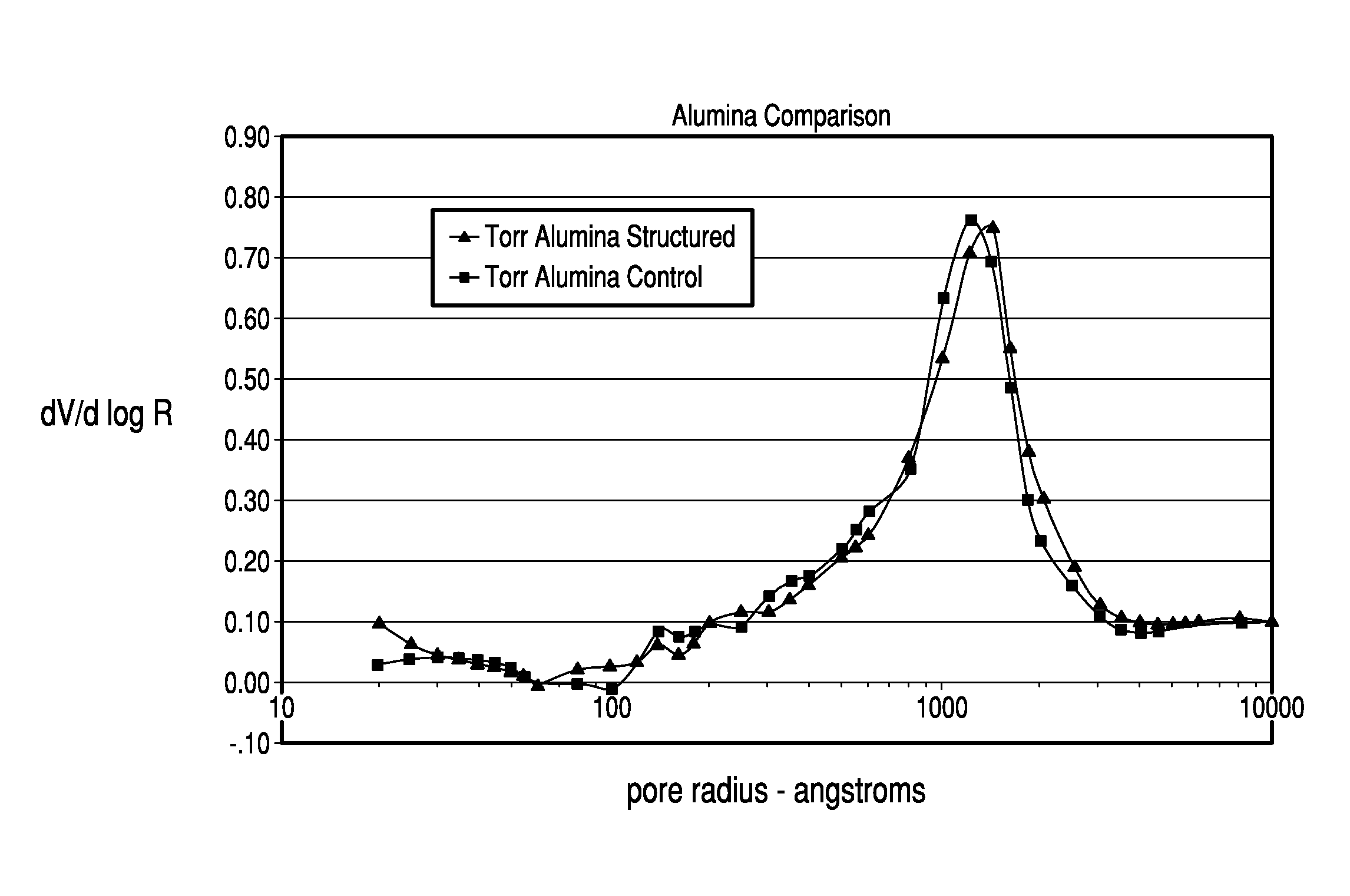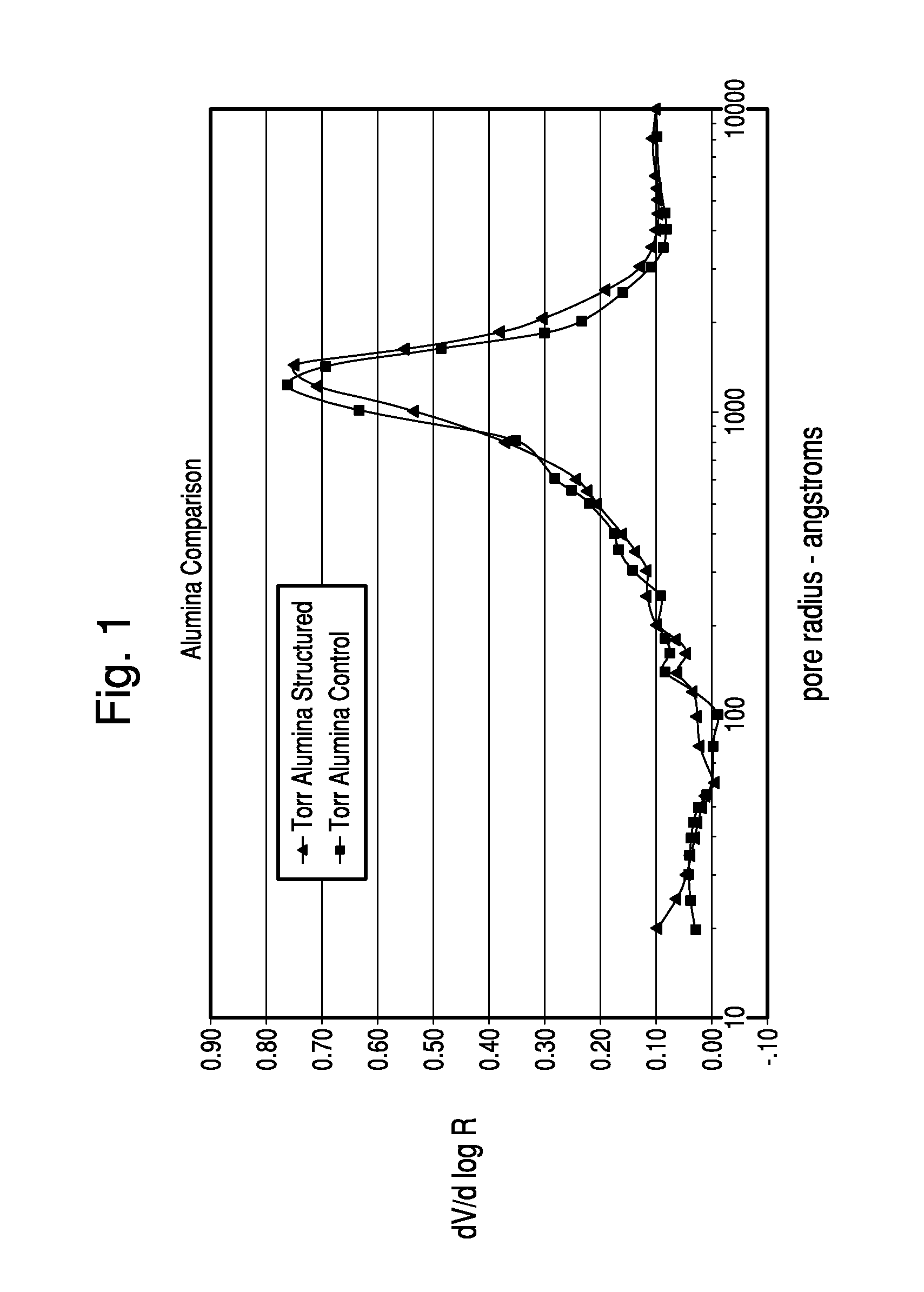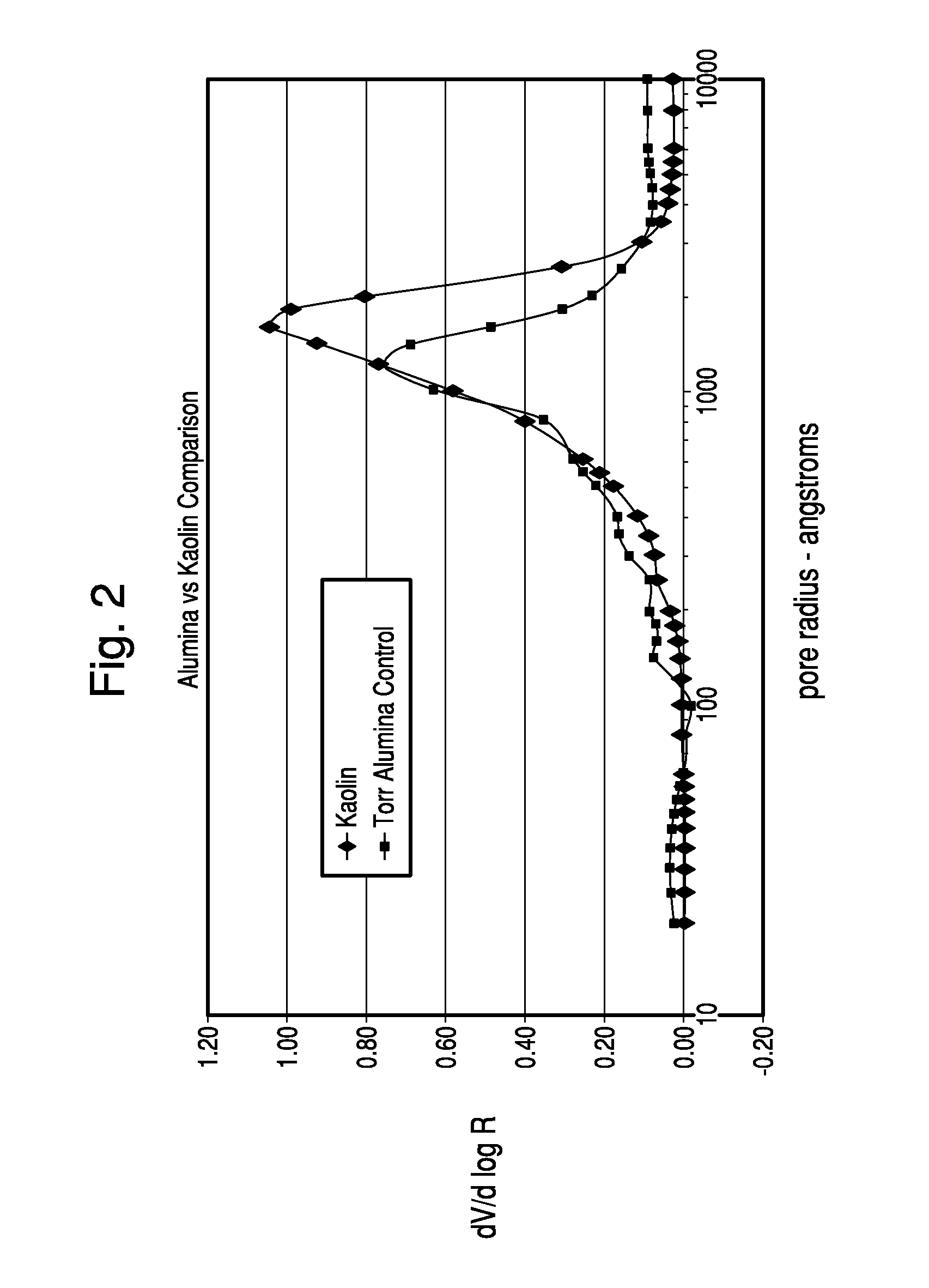Thermochemical structuring of matrix components for FCC catalysts
a technology of matrix components and catalysts, applied in the direction of catalyst activation/preparation, physical/chemical process catalysts, catalyst activation/preparation, etc., can solve the problems of high cracking activity, limited utility of catalysts, selectivity losses, etc., and achieve the effect of increasing the internal porosity of oxides
- Summary
- Abstract
- Description
- Claims
- Application Information
AI Technical Summary
Benefits of technology
Problems solved by technology
Method used
Image
Examples
example 1
[0061]In this example, the feed for a commercial calcined kaolin, used for example in a NaphthaMax® catalyst is used to demonstrate how the addition of ammonium polyphosphate liquid (11-37-0) to the spray dryer feed slurry can stabilize the mineral lattice and enhance calcined product hardness. The hydrous kaolin in this example exhibits a particle size distribution of 86 to 90% less than 1.0 micron (as measured by Sedigraph 5100 / 5120 particle size analyzer) and a BET surface area of 20.0 to 22.0 m2 / gm (Gemini 2370 surface area analyzer). 11-37-0 ammonium polyphosphate liquid was added at a rate of 0.50 weight percent P2O5 per dry ton of kaolin. The kaolin slurry concentration was in the 45 to 65% solids range.
[0062]The slurry was spray dried by a process equipped with a centrifugal atomizer. This method was selected for convenience. i.e. other drying methods would be equally effective with a goal to reduce product moisture to below 2.0 percent by weight (CEM Labwave 9000 moisture a...
example 2
[0066]The kaolin in this example is used to produce calcined intermediates for FCC catalysts and exhibited a particle size distribution of 86 to 90% less than 2.0 microns (as measured by Sedigraph 5120 particle size analyzer) and a BET surface area of 18.8 m2 / gm (Gemini 2370 surface area analyzer). 11-37-0 ammonium polyphosphate liquid was added in increasing increments of from 0.15 to 0.35 weight percent P2O5 per dry ton of kaolin. The kaolin slurry concentration to spray drying was in the 45 to 65% solids range. Apparent bulk density (ABD) is the weight per unit volume of a material, including voids that exist in the tested material. It can also be called Bulk Density and provides a measure of the “fluffiness” of a material in its supplied form. Tamped bulk density (TBD) measures the propensity of a kaolin to gradually pack more efficiently. This tendency was measured with a TAP-PACK Volumeter (ISO 787-11).
[0067]The structuring advantages brought about by the addition of polyphosp...
example 3
[0069]In this example, a dispersed kaolin feed slurry was first treated with polyphosphate, then spray dried and calcined. The spray dried product moisture was again controlled to less than 2.0% by weight but the pulverization step before heat treatment was eliminated. This approach was used to assess the benefits of polyphosphate addition in stabilizing / strengthening the cohesiveness of a fired mineral structure. Ammonium polyphosphate liquid (11-37-0) was the source of the polyphosphate treatment. The kaolin starting material was a typical dispersed hydrous slurry exhibiting a particle size distribution as measured by Sedigraph 5120 of 86% less than 2.0 microns and a BET surface area of 18.0 to 22.0 m2 / gm. The slurry was treated with ammonium polyphosphate liquid to 0.50 and 1.0 percent by weight P2O5 and then spray dried to yield a bead average particle size (APS) of 65 to 75 microns as measured by laser particle size analysis. The spray dried beads were then calcined in a muffle...
PUM
| Property | Measurement | Unit |
|---|---|---|
| diameter | aaaaa | aaaaa |
| temperature | aaaaa | aaaaa |
| diameters | aaaaa | aaaaa |
Abstract
Description
Claims
Application Information
 Login to View More
Login to View More - R&D
- Intellectual Property
- Life Sciences
- Materials
- Tech Scout
- Unparalleled Data Quality
- Higher Quality Content
- 60% Fewer Hallucinations
Browse by: Latest US Patents, China's latest patents, Technical Efficacy Thesaurus, Application Domain, Technology Topic, Popular Technical Reports.
© 2025 PatSnap. All rights reserved.Legal|Privacy policy|Modern Slavery Act Transparency Statement|Sitemap|About US| Contact US: help@patsnap.com



